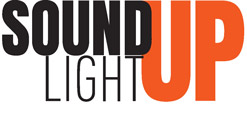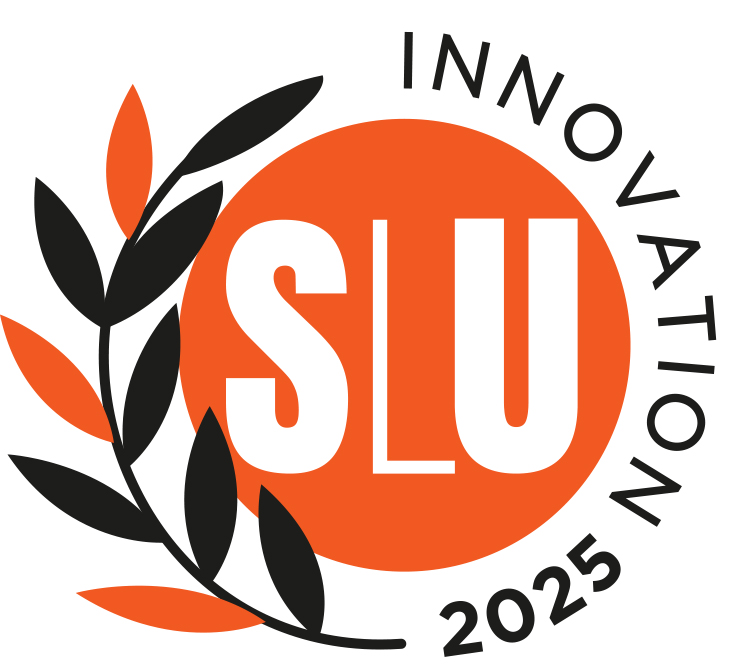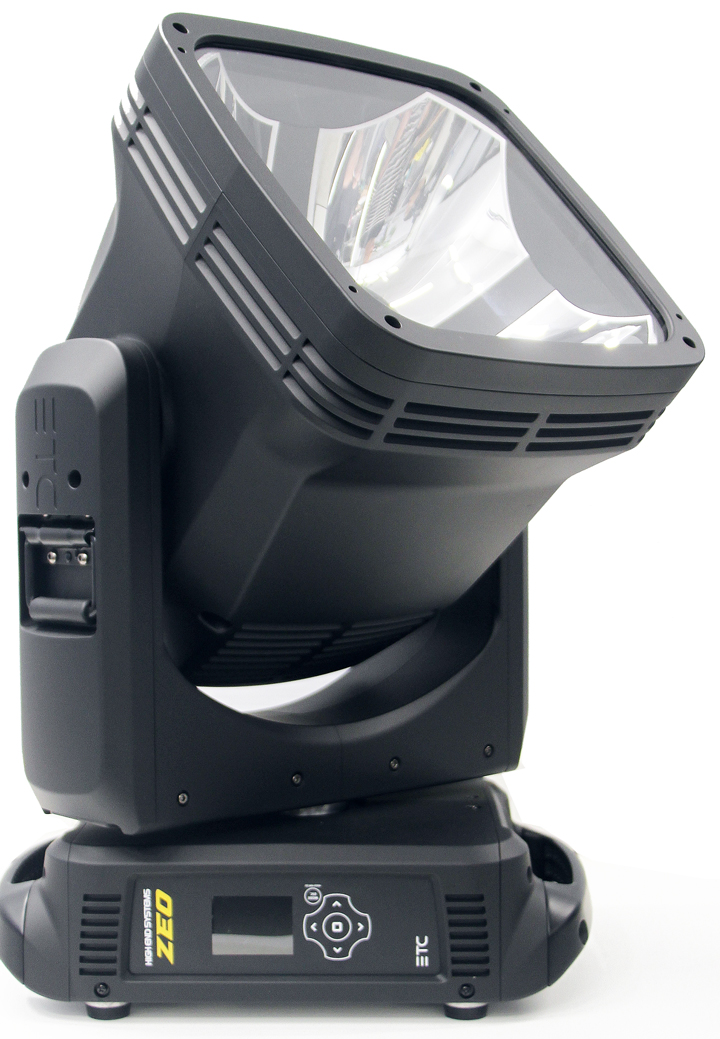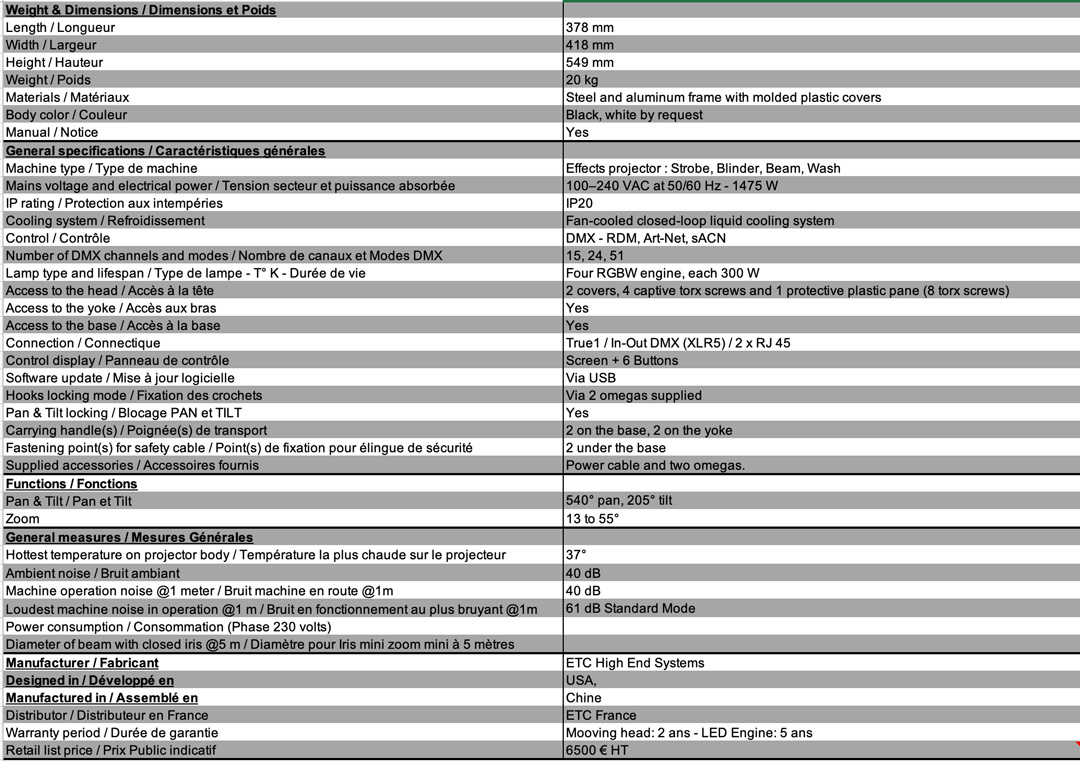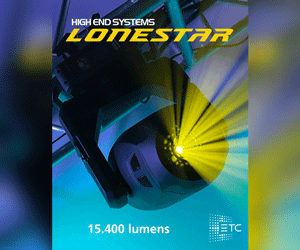It’s always fascinating to see a “Unicorn” arrive on the market. With Zeo, which won an SLU Innovation Award, we recognize the prolific imagination of Richard Belliveau, one of the founders of High End, now in the ETC stronghold. He has often surprised us with incredible achievements. Here is precisely one of these “oddities” with improbable and elusive characteristics! The test!
The device is rather strange at first glance. It is a servo-driven lyre-mounted fixture. It has a wide-open head inside which houses a set of four large parabolas, each forming an eighth of a sphere. At its center, a “pistil” equipped with LED sources promises to diffuse light onto all the mirrors. The device is quite compact, although it looks imposing, and very light. It weighs no more than 20 kg.
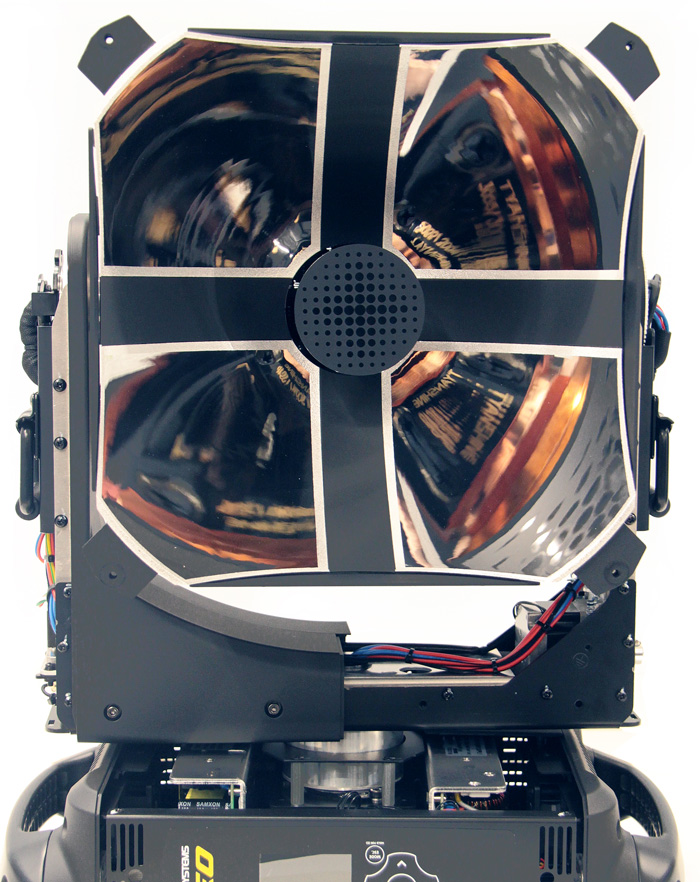
.
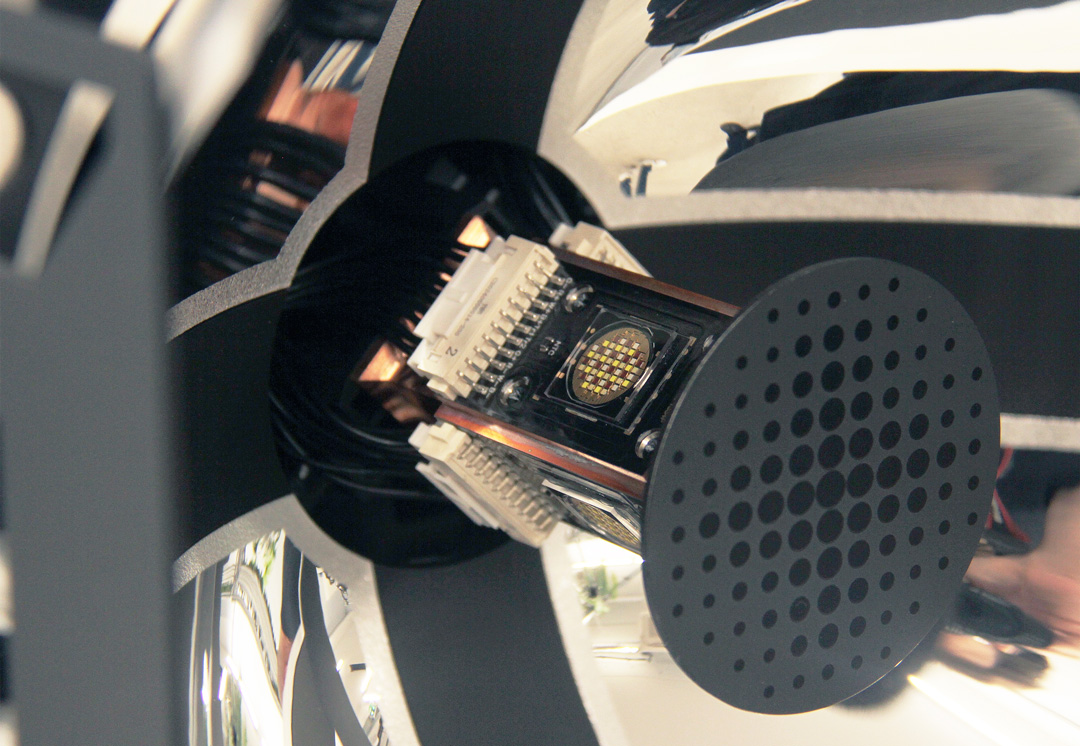
The effect is quite difficult to describe because it is neither a Beam, nor a Wash, nor a Spot… It is a fixture that “diffuses light” in a kind of beam which is both concentrated and diffuse, very irregular… A zoom (13° to 55°) allows you to obtain different aspects of the beam and to “open” it (one could say “explode”) until you get a cone of light.
The power is quite significant since each “dish” (parabole) receives light from a 300W RGBW module (1,200W of LEDs in total) to generate this light, which is quite capable of hitting the ground running!
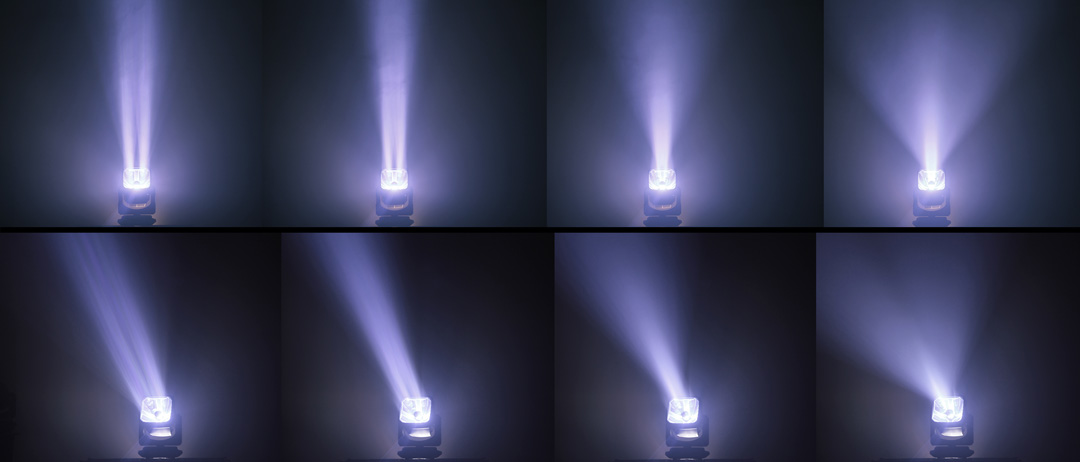
The outline of each dish is highlighted by a frosted line a few millimeters thick, which is enough to create a luminous area giving the impression that they are lighting up. This is an aspect of the fixture that is quite attractive and will be appreciated when placed in the field of vision of a camera.
Lighting as an illuminated object is also a possible application with this fixture. By subtly dosing the light, the close-up appearance is extremely aesthetic. It can undoubtedly be an essential element of a strong visual signature within a scenography.

The light output of the Zeo
No photometric measurements of the Zeo; this is a pure effects fixture, but the power is there. We’re talking about 1,200W of LEDs. The indescribable and unique quality of the light produced by Zeo is its real appeal. This is a fixture that will produce completely unique and original visuals to create light displays or a specific tableau/cue. In fog, this strange beam comes to life and takes on consistency.
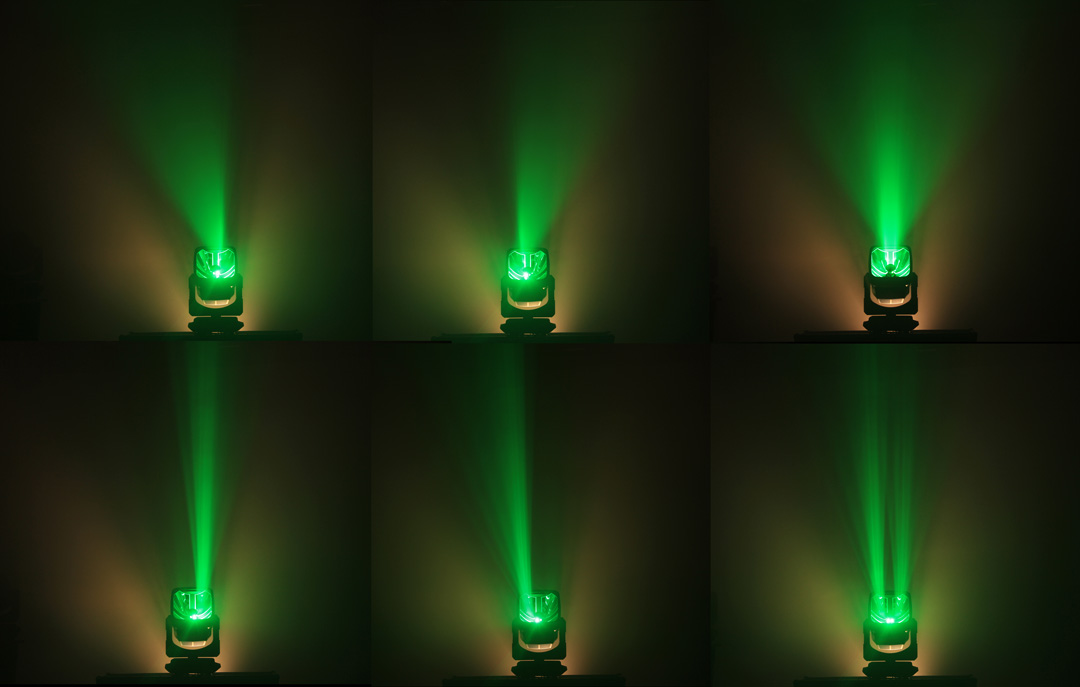
The zoom function allows you to accentuate a huge halo of light around the main beams, or to close the whole thing down into a group of 4 grooved beams that come together. The effects can be intimidating, particularly in a rather brutal musical context, during which a swarm of Zeos could unleash their beams, sometimes in awesome backlighting, sometimes in lightning strobe effects.
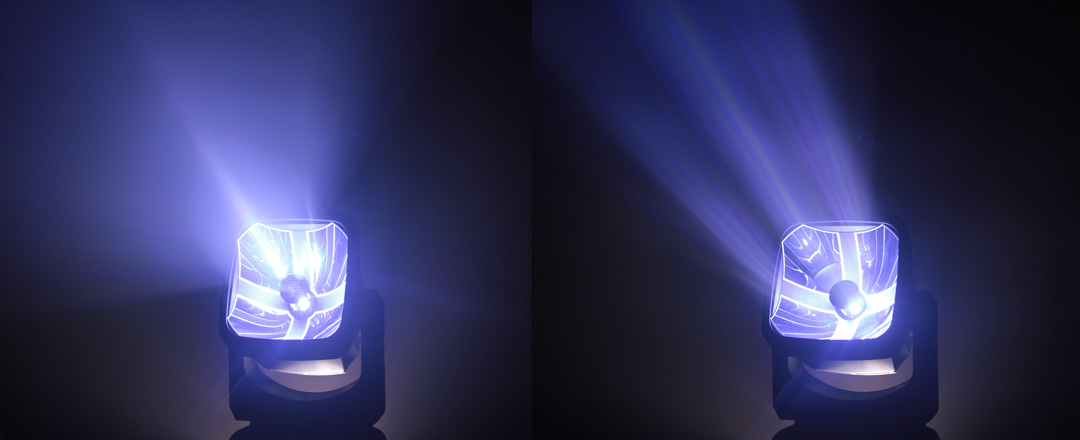
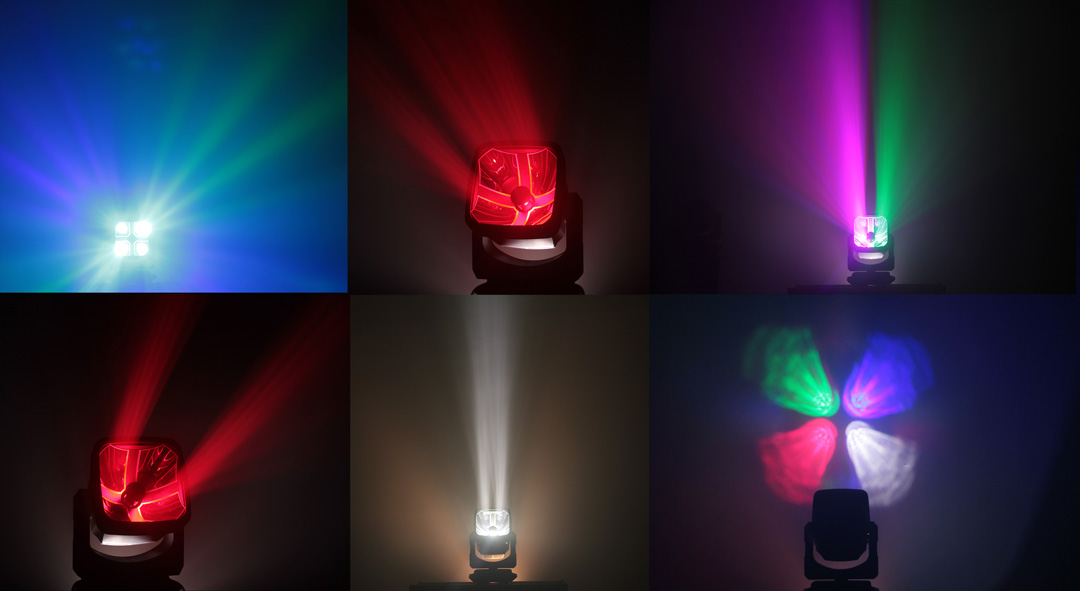
What are the colors like?
The colors are very nice, and although all shades are possible, the very principle of the Zeo, which is, to put it bluntly, “without optics,” does not allow for a perfectly uniform beam to be obtained when mixing colors.

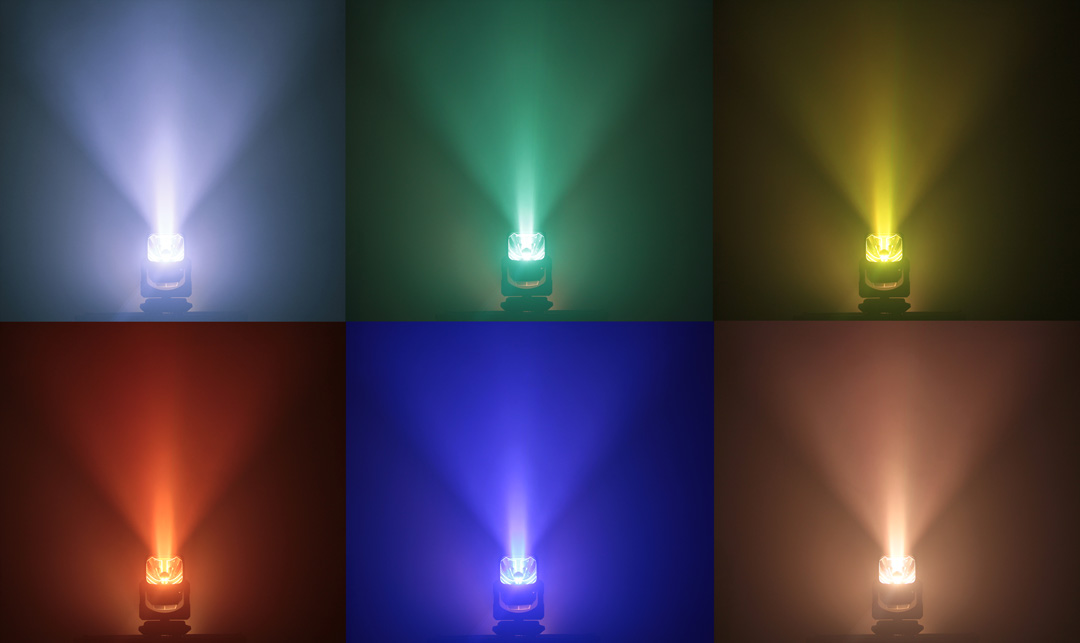
But this feature is precisely part of the fixture’s design, and it will be fully exploited during color mixing. Because each of the 4 parabolas corresponds to one of the 4 RGBW LED matrices, they are obviously independently controllable. The range of possibilities with this fixture is even greater. ETC has, however, provided a frost that screws in front of the output lens to improve color mixing.

Controlling the ZEO
Zeo has 3 DMX control modes:
- “Wash” mode (15 channels) basic control of fixture and global colors.
- “Reduced” mode (24 channels) adds 9 channels allowing access to different pre-programmed macro functions (choice of a background color for certain effects, animation speed, fading to choose the softness of attack of each effect step, etc.)
- “Standard” mode (51 channels) provides access to independent control of the 4 sectors in RGBW + CTO + 16-bit individual dimmer.
Le Zeo can operate using Artnet/sACN via network connectors.
.
Video presentation
.
Let’s open it up to see how it is built!
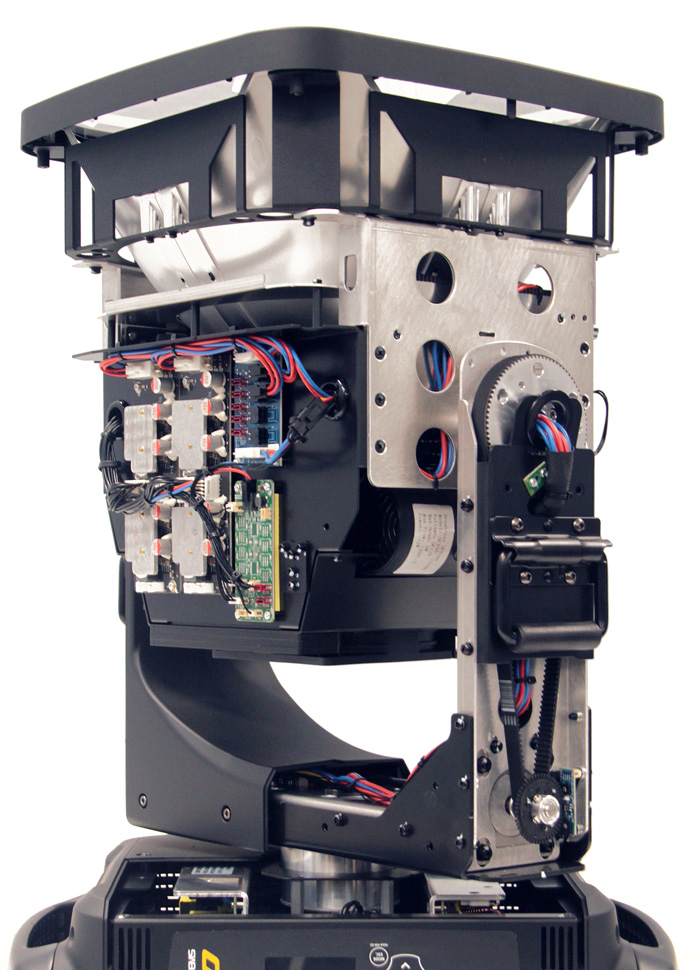
The manufacturing of the fixture is fairly standard on the base unit/yoke side. The base unit includes the power supply electronics, the color screen menu accompanied by the 6 customary High-End Systems setting buttons, a connector panel with a True1 power input (no copy given the fixture consumes 1,650 watts when at full), a 5-pin XLR DMX input/output, two RJ45 connectors for the network, and a USB port for software updates.
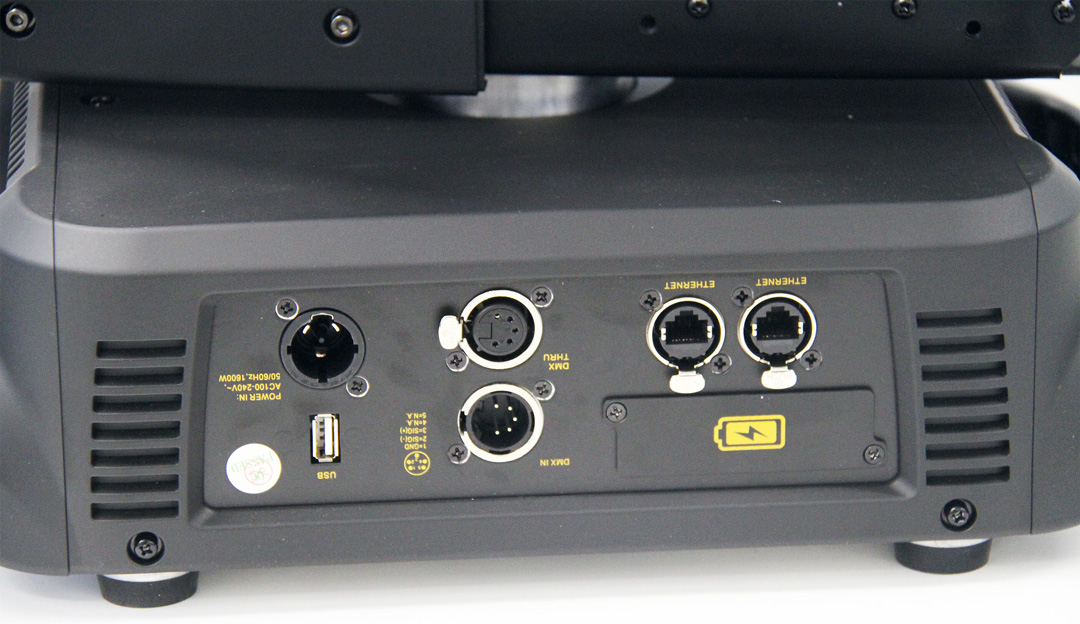
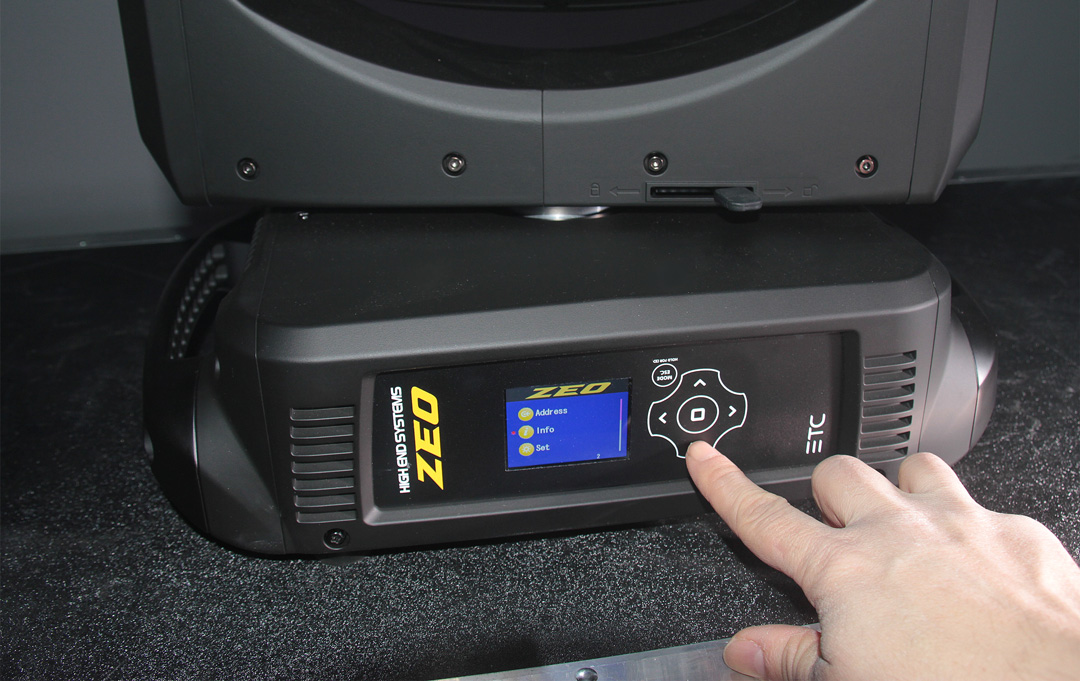
Beneath the fixture, oh joy, there are various attachment options. You can use the two types of omegas offered by High-End: the long ones, and the short ones (optional).
Having both models in the flight case is, in my opinion, an excellent way to avoid any problems related to truss struts. There are also two large “slots” for safety cables underneath the fixture.
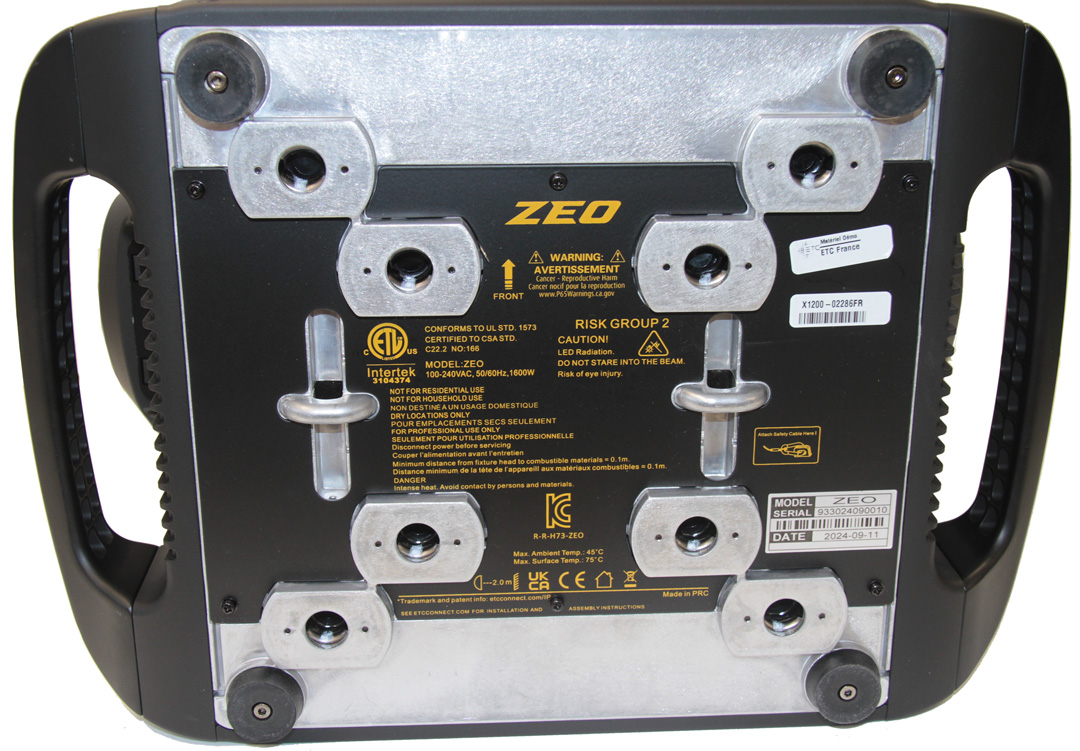
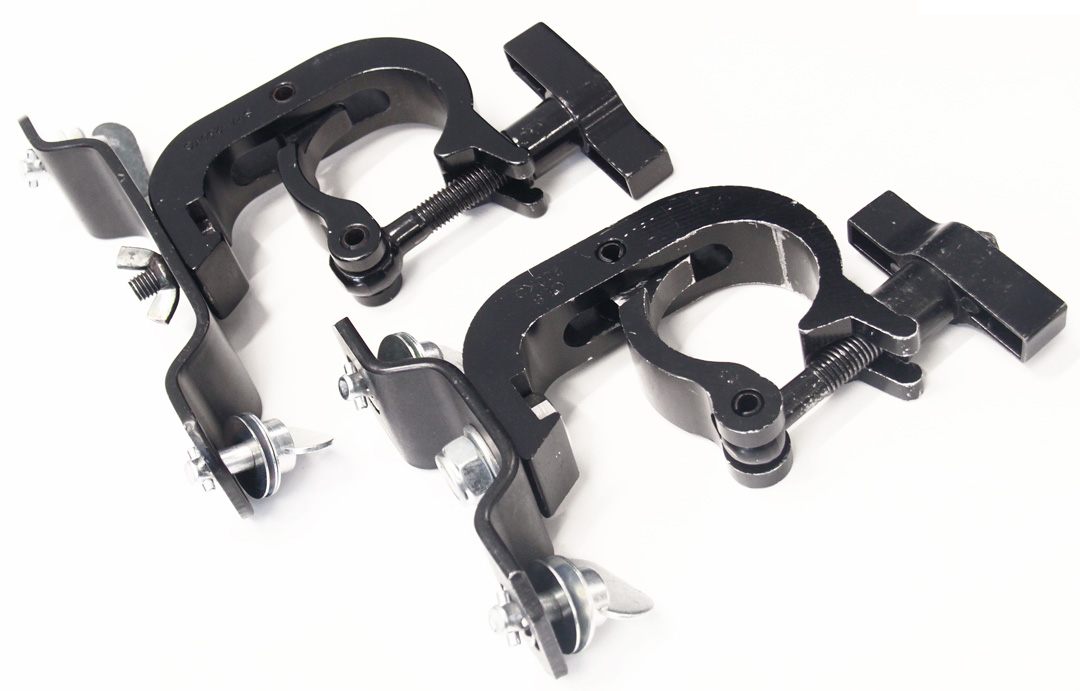
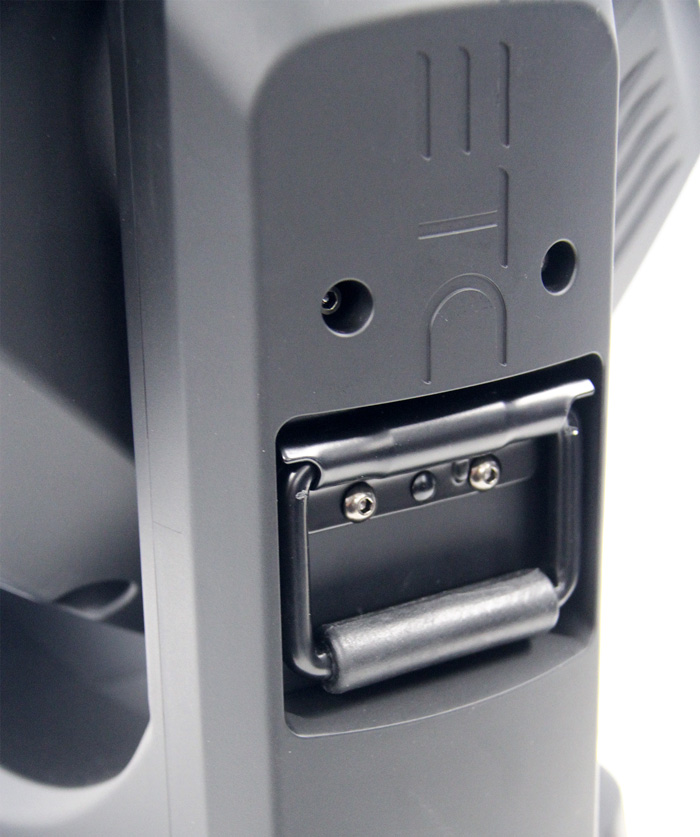
The classic “flight-case” style folding handles that High-End Systems installed on all its large fixtures on each “arm” of the yoke are very handy. They are quite small here but still welcome for handling the fixture and, the pan and tilt axes are lockable.
The head is disassembled by removing a few Torx screws, revealing its “skeleton”. The protective glass in front of the dishes is removed, and everything is finally visible. The construction is particularly meticulous.
The optical operating principle is based on the installation of the four LED sources on this square-section column (the “pistil” described at the beginning) and its translation from the bottom of the device until it is deployed towards the front. One of the challenges of operating such a fixture is managing to cool the 1,200 Watts of LEDs while the components are back-to-back on such a small surface area and in a very cramped environment.
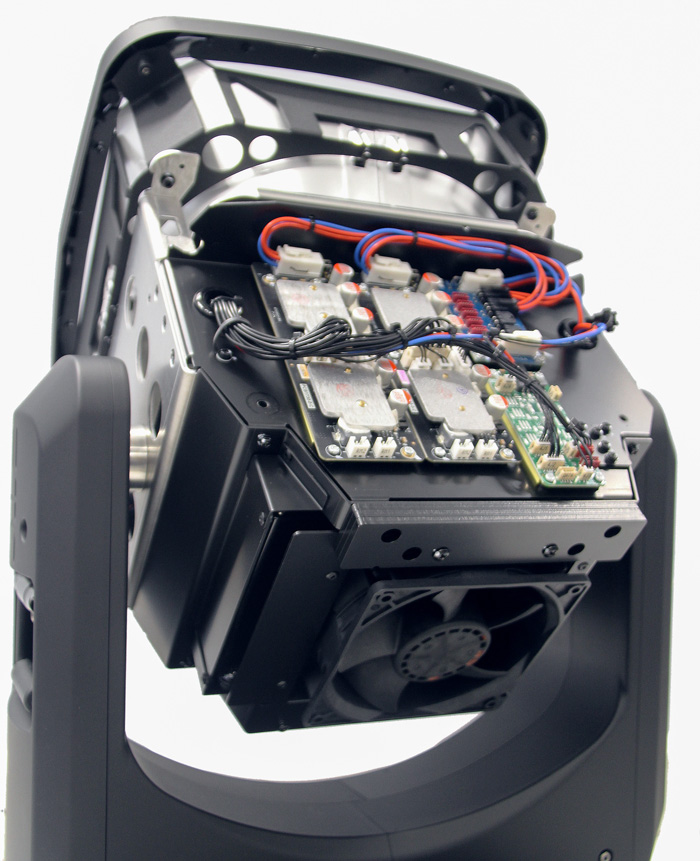
The solution adopted here is that of a bottom-ventilated radiator, which occupies a good part of the rear of the head, and in a closed-circuit fluid system cooled by this radiator and operated by a pump which ensures continuous and significant circulation in the network of pipes.
The flexible pipes that follow the deployment of the column during its movements in the center of the parabola are the main part of this special layout in the cooling circuit, and their curved angle is always maintained so as not to be dependent on mechanical constraints that could affect the circulation of the fluid during the movements of the column. The realization is brilliant and intelligent.
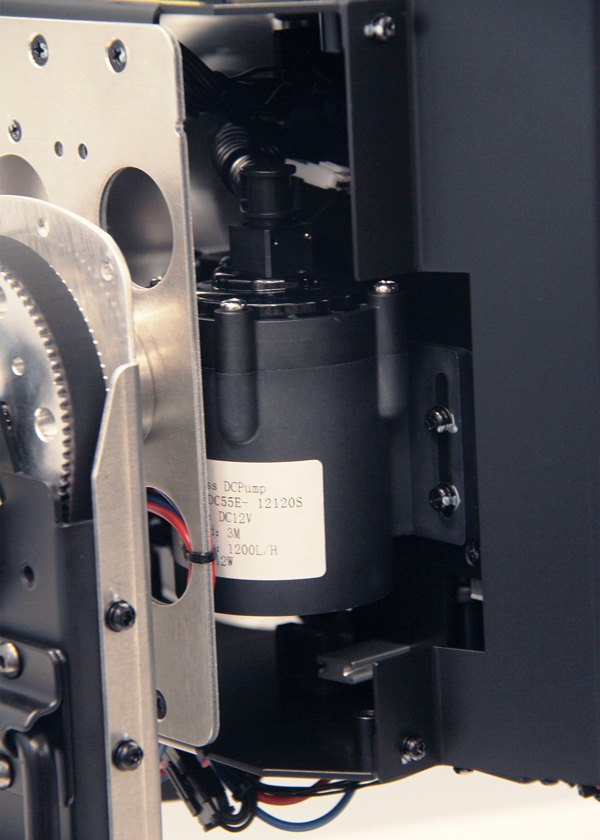
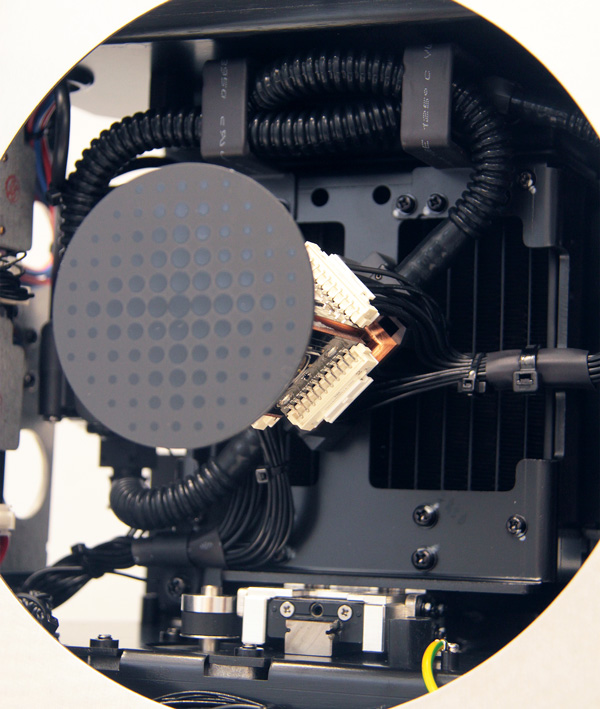
The reflector can also be dismantled and we see that it is made up of 4 plastic “mirrors” covered with a reflective coating. They are clipped onto 4 black plastic elements which act as physical separators between the 4 reflection areas.
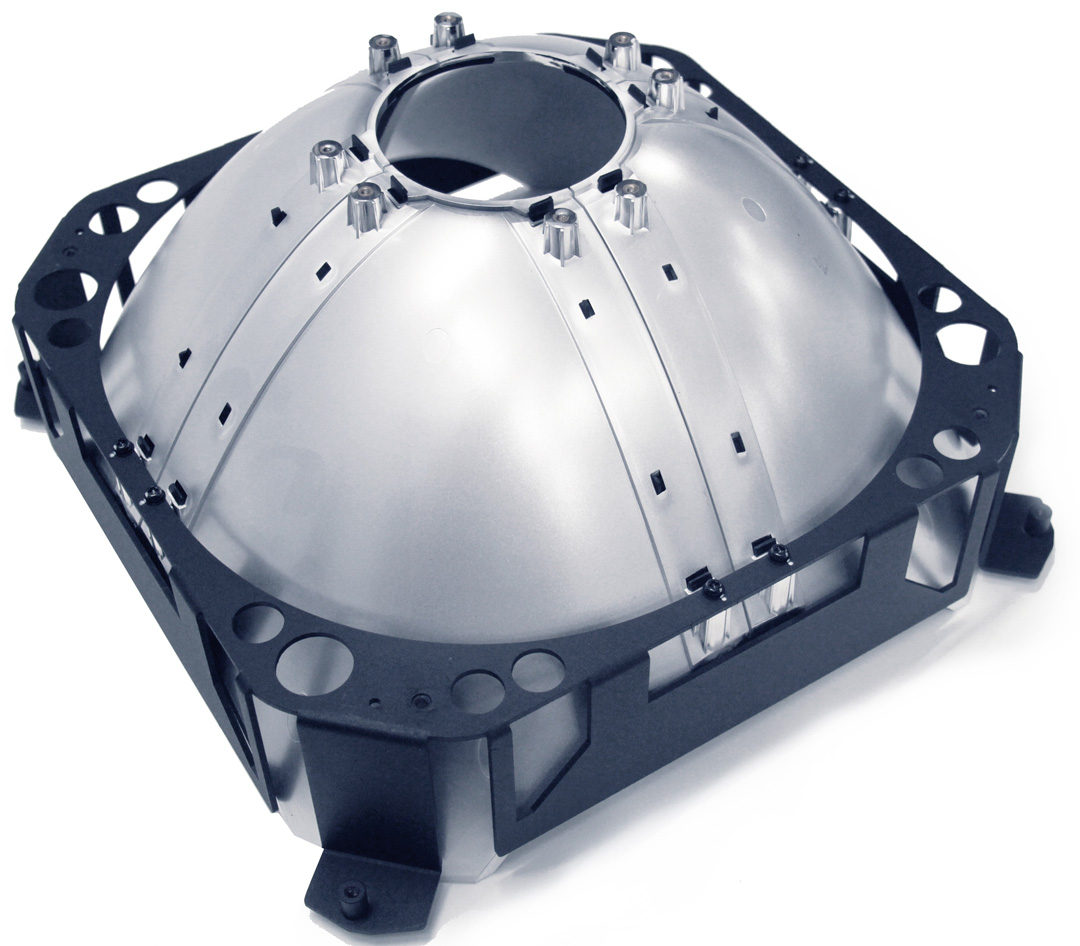
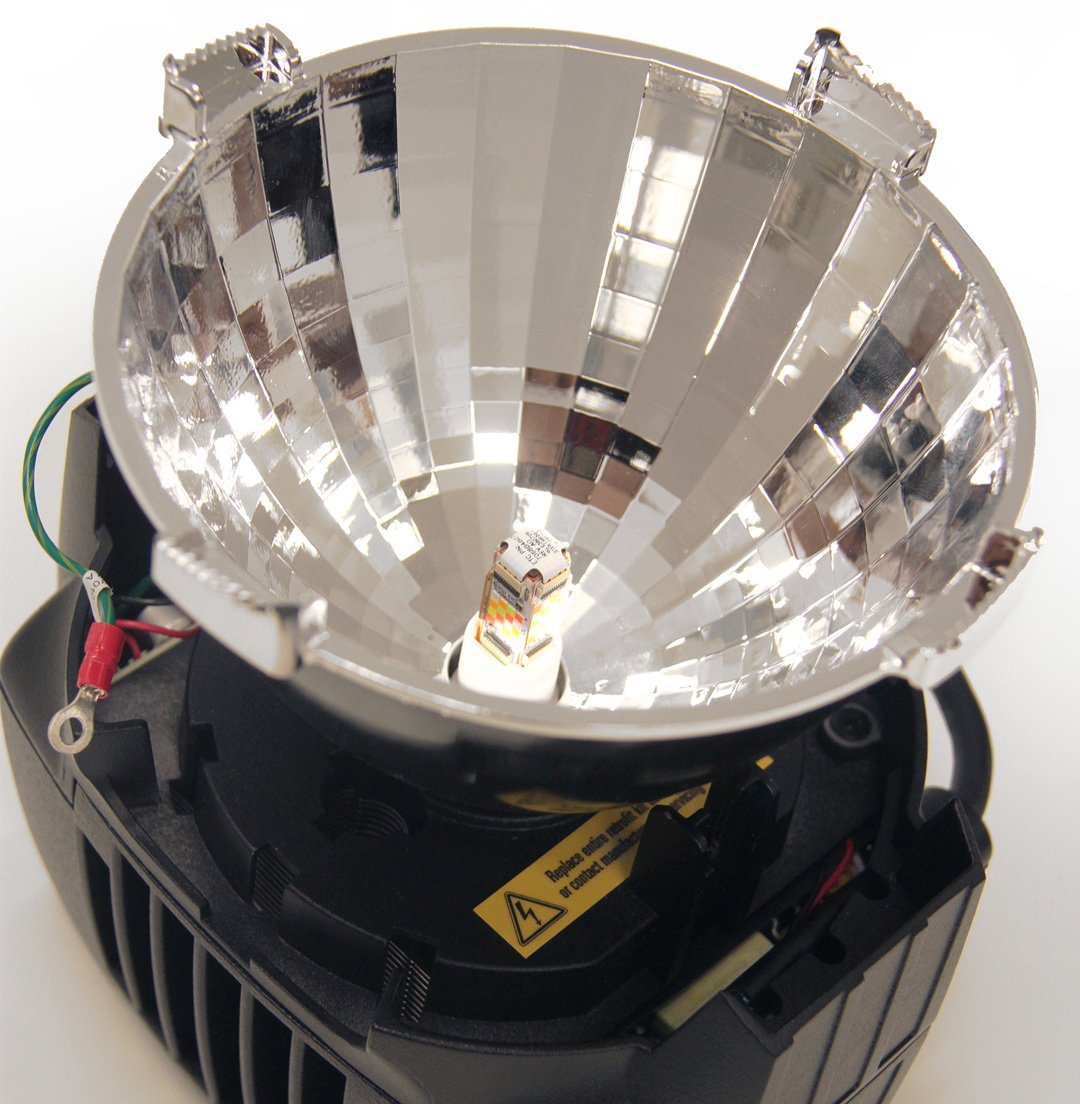
To do what?
The whole concept of this fixture is really cool. Its creator’s inspiration probably came from observing the ETC “Source 4WRD Color II” LED module (a hatch adaptable to Source 4 halogen profiles to retrofit them with colored LEDs), imagining what a device of this kind could offer diffused on reflectors. The idea is brilliant and gives a stunning result.
The Zeo’s cooling system may be ingenious and well-designed, but the fact remains that the fixture is noisy at full power in standard mode, which won’t be a problem in a rock, metal, or, electro set, at a concert or at a festival if you multiply the number of these fixtures in your kit. High End has, however, provided a Studio mode which, at the cost of a 20% output reduction, will ensure quieter operation in smaller venues.
However the linear control of the ventilation on a DMX channel allows you to dose the noise according to your needs, the software then adapts the brightness automatically. Because Zeo can constitute the major element of a scenography, a basic resource in a very specific kit. Its open beam, especially in white or almost white colors, can take on a very aggressive and very “raw” appearance.
Collateral damage to the audience is to be expected as it “leaks” light everywhere, but it is important to understand that what is usually perceived as a beam imperfection is here the very basis of the concept of the Zeo effect. You have to try the fixture, play with it a little and when you do, it’s really fun to use.
Conclusion
The Zeo is truly a High-End Systems fixture, both in terms of the quality of its construction and its inherent originality. It is once again a one-of-a-kind, unclassifiable fixture, equipped with lighting resources that are off the beaten track. It’s not a “do-it-all fixture,” but what it does, no other will.
 We like:
We like:
- Its construction,
- Its original effect,
- The powerful output,
- The colors.
 We like less:
We like less:
- The noise in standard mode.

